Showing 61–70 of 322 results
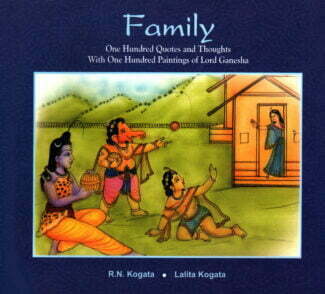
This collection of 100 quotations on home, hearth and good family management with thematic paintings presents the near and dear ones as a colourful bouquet of fragrant fragile flowers, interwoven intricately but inter-dependent for love, care, respect and inspiration for leading a happy, successful and productive life with smoother, stronger family ties
This collection of 100 quotations on home, hearth and good family management with thematic paintings presents the near and dear ones as a colourful bouquet of fragrant fragile flowers, interwoven intricately but inter-dependent for love, care, respect and inspiration for leading a happy, successful and productive life with smoother, stronger family ties

The book containing spiritual and literary discourses of Sufi Shaikh Nizamuddin Awliya focuses on values that can create a true human being. It provides information on many Sufi saints and the ulama.
Fawaid al-Fuad is a monumental work of spiritual and literary discourses of Shaikh Nizamuddin Awliya who lived in medieval India. The book is a didactic classic in the form of recorded conversations. Devoid of supernatural elements, it provides useful information about a large number of Shufi saints and ulama. A living testimony to the accord between the Shariah and Tariqah, therein he spoke on the necessity of practising values that could transform man into a true human being, full of love, tolerance, forgiveness, patience, forbearance, sincerity in devotion, adherence to truth and generosity. Sufism or Islamic spiritualism that flourished in India with the advent of the Turkish rule in the 13th century forms the backdrop of this work. The moral teachings of his spiritual mentors, dwelt at length, in various majlises, constitute the bed-rock of this treatise which has great literary distinction. Written in fluent Persian prose style, it is embellished with apt verses to elucidate the points of discussion. The Shufi way of life and the teachings of the Chishtiyah order have been vindicated as a sharp contrast to the material prosperity, territorial conquest and the lust for power in the contemporary world. The compiler Amir Hasan Ala sijzi a great scholar of Persian language, has done a yeomans service in giving a definite shape to this monumental work. The Shaikhs didactic intention and spiritual flavour have been well-preserved through the compilers directness of style. Fawaid al-Fuad rendered into English from the original Persian text based on an ably edited edition of the book represents a serious attempt to understand the nuances of the mystic mind of a great shufi saint of the sub-continent. This academic venture of Prof. Faruqi will be of great use to lay readers as well as the scholars of Islamic mysticism.
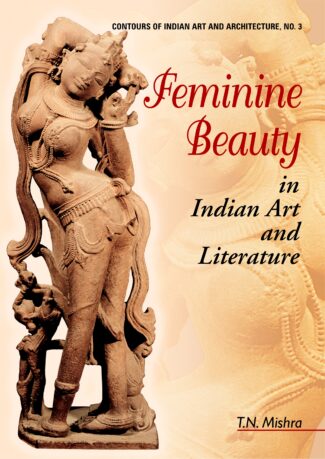
The book is a study of Indian art, iconography and sculptures representing devotion, love, human moods and sentiments, especially in its depiction of female sculptures on ancient temples covering famous temple of Khajuraho, Bhubaneswar, Pura, Konark, Nagda, Belur, Halebid, Ajanta and Ambarnath of various dynasties.
The book is a study of Indian art representing devotion, love, human moods and sentiments, especially in its depiction of female sculptures on ancient temples. It begins with a discussion on Indian art as synthesis of the sublime in nature and the human physical form that conveys the sublime. With numerous illustrations of art, iconography and sculptures from different regions of India, it examines a breath-taking variety of female forms of divinities, celestial nymphs and others symbolising youth, beauty and sensuousness. Referring to features of art of different periods under various dynasties, like the Gupta art, it focuses on representation of female forms and couples particularly erotic realisations in art, i.e. nude figures and mithuna scenes. It studies the figures carved on various materials and in different styles, highlighting the salient features of each one of them. The influence of religious traditions, as Tantrism, on the art depicted is painstakingly traced. Giving examples from famous temples of Khajuràho, Bhubaneswar, Purã, Koõàrk, Nàgdà, Belår, Haëebid, Ajantà and Ambarnàth, the work examines expressions, postures and attitudes of figures to show that they reflect physical bliss, emotional and psychological expressions, and the spiritual state. The book will be useful for scholars of art and art historians in particular who are keen on understanding the aesthetics of Indian art.
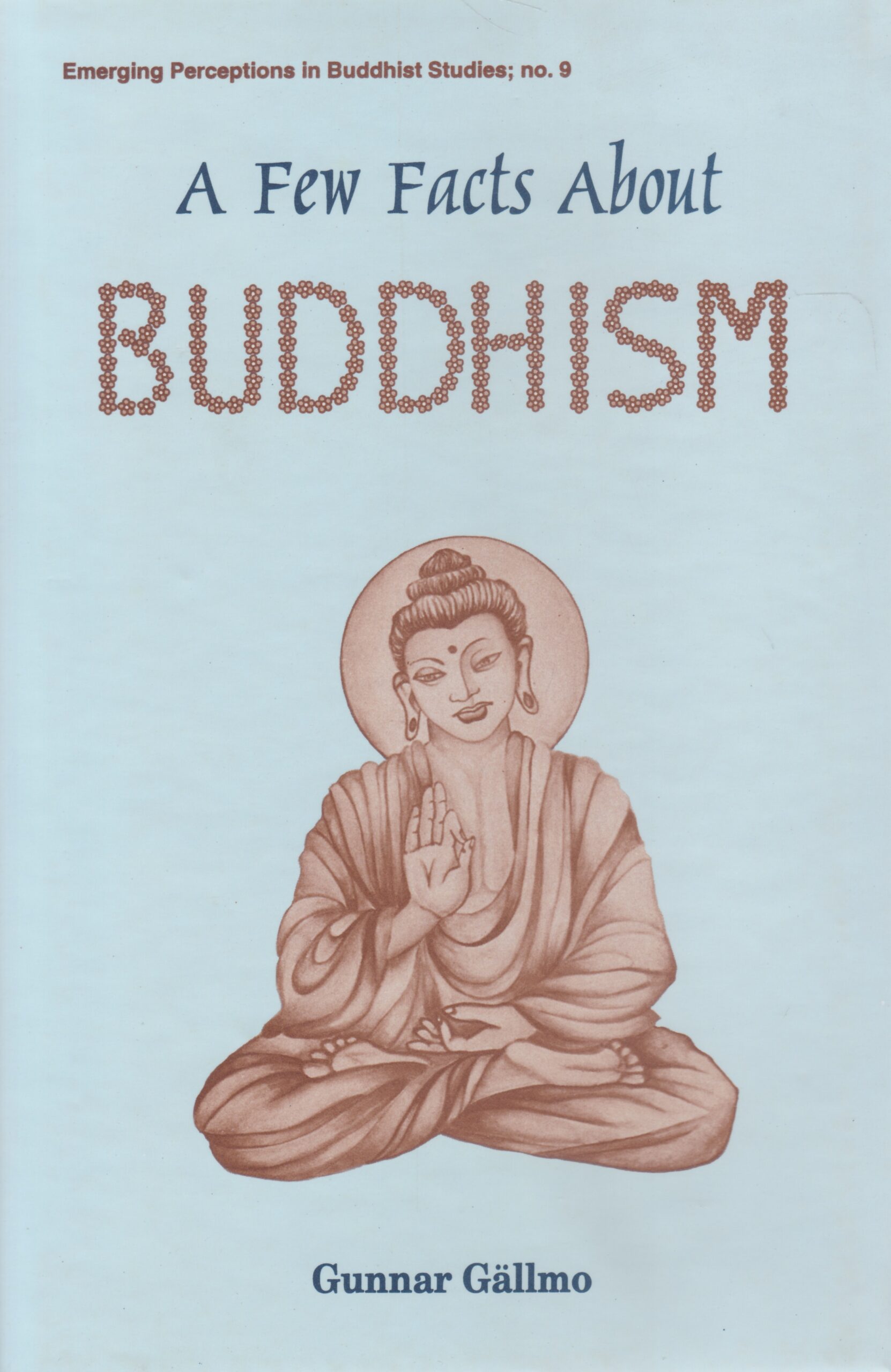
Marshalling facts from the oldest preserved texts, this work studies the Teacher (the Buddha), the Teaching (Dhamma) and the Taught (Samgha) throughout Buddhisms history. It makes a comparative study of Buddhas original teachings and later Buddhist traditions.
Today, when political ideologies/ isms are crashing down and when, at the other end, the great monotheistic religions are trying to survive by turning their backs on logical thinking and intellectual consistency, it might be worthwhile taking a look at the alternatives that by-pass the lopsided views of both materialism and idealism the alternatives that do not have to explain how an omnipotent and all-benvolent God can permit evil, nor how human barbarism can persist doggedly in a progressing world society. And among these alternatives, Gunnar Gallmo rediscovers the oldest existing world religion: the first historically documented case of international (or perhaps non-national) thinking, a teaching that may, more or less, directly or indirectly, positively or negatively, have influenced all later religious, philosophical and political teachings: Buddhism. From the vast corpus of the oldest preserved texts, Gunnar Gallmo marshals facts around Buddhism quintessentially, authentically. His book is a well-knit, at once compelling presentation of the Teacher (the Buddha), the Teaching (Dhamma/Dharma), and the Taught (the Samgha/the Community) throughout the 2500-year-long history of Buddhism: first in India, then in Asia and, finally, today in the world. And since Buddhism is a religion with an actual historical personage as its founder, the author tries to explore how the Enlightened Masters original teaching underwent a change in later tradition, and how the differences between the two have cropped up. With a glossary of Pali/Sanskrit terms and highly significant bibliographic references, this treasury of facts about Buddhism is bound to fascinate scholars and general readers alike.
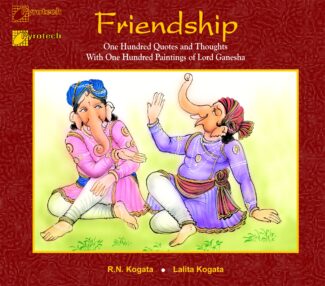
True friendship in a cohesive force and its virtues are many. It not only brings the people closer and knits the society into a caring unit but also stimulates trust beyond the boundaries. This in what the quotes contained in this work with objective art justify for illuminating minds towards unification of the mankind.
True friendship in a cohesive force and its virtues are many. It not only brings the people closer and knits the society into a caring unit but also stimulates trust beyond the boundaries. This in what the quotes contained in this work with objective art justify for illuminating minds towards unification of the mankind.

The book is an in-depth study of the origin of bhakti as expounded in ancient scriptures including the Vedas. While the emphasis is on RÀmÀnujas understanding of the Absolute, it explores the bhakti devotion in aivism and throws ample light on mans need for devotion without religious convictions.
The volume is a comprehensive work on bhakti yoga or bhakti marga, seen as the direct path to perfection, the principal means to the progressive perfection of the soul.
The book begins with a detailed study of the origin of bhakti in the Vedas and its understanding in the Brahmanas, Aranyakas, the Upanishads and the Puranas, and other works. It attempts to approach bhakti as a representation of God in the created world and devotion without religious convictions. It throws light on man’s need to develop such devotion through absolute self-surrender to God. The bhakti concept in Vedanta is explored in-depth by referring to Vedanta schools of Adi Shankara, Bhaskara Bhatta, Ramanuja, Caitanya Mahaprabhu, the Alvar Saints of south India and the concept of devotion of Andal. Quoting from the thoughts of diverse bhakti saints of India, it explores the bhakti devotion in Shaivism referring to Shiva as the Supreme God and the concept of Shakti, aspects relating to moral responsibilities, bondage and liberation, and the doctrine of Shatstha. The emphasis is on Ramanujas teachings on bhakti: his understanding of the Absolute, jnana and consciousness, jiva and atma, time and spiritual consciousness. There is a chapter that provides a practical approach to bhakti thought, for instance, ways of developing consciousness of it and non-meditative forms of bhakti.

One of the earliest authoritative works by a famous Western scholar, on the fundamental aspects of Hinduism, its beliefs, philosophy and practice. It also discusses critically the Vedic and Upaniùadic literature and philosophy, central doctrines, traditions and pilgrim centres.
The book is one of the earliest authoritative works on the fundamental nature of Hinduism, authored by a noted Western scholar, Sir Monier Monier-Williams. The scholarly work deals with the fundamental aspects of Hinduism: the nature of its beliefs, philosophy and practice. It provides precious details on the principal works of Hinduism: the Vedas, the Upanishads and the Dharmashastras. It discusses the essence of the Vedic hymns, the Brahmanas and the sacrificial system, the Upanishadic philosophy, the doctrine of triple manifestations, and the development of sectarian beliefs Shaivism, Vaisnavism and later Shaktism. The in-depth study delves objectively into the major concepts and doctrines associated with Hinduism, such as, the doctrine of incarnation, doctrine of devotion and idol-worship as well as the caste system. It presents a discussion on the famous places held sacred by the Hindus which are the major centres of pilgrimage: the city of Benares, Allahabad, Gaya, Nashik and Haridwar, among others.

Dr. Puligandla deals with the essentials of Indian philosophy, emphasising its methods, temper and goals while delving into specificities. Major schools of the philosophic tradition (Carvaka materialism, Jainism, Buddhism, Yoga, Vedanta among them) are thoroughly analysed.
Indian philosophy reflects some of the earliest thought-traditions in human history. Its foundations can be traced to ancient minds and their capacity for insatiable curiosity and constant meditation. The Indian thinkers of old aimed their pragmatic philosophies at not just the satisfaction of intellectual curiosity or pursuit of theoretical truths but actually the assimilation of intellectually discerned and established truths into ones own personality for a life of freedom and enlightenment. This is true of modern Indian philosophers, like Sri Aurobindo and Dr. Radhakrishnan, as well. Fundamentals of Indian Philosophy reflects the vastness and richness of this philosophic tradition in a comprehensive and all-embracing yet compact presentation that lays bare the essentials of Indian philosophy. Dr. R. Puligandla takes special care to emphasise the methods, temper and goals of Indian philosophy even while delving into the specificities. All the major schools of the philosophic tradition are objectively and thoroughly analysed the Carvaka materialism, Jainism, Buddhism, Yoga, Vedanta among them. The author details the undeniably bold and original ideas of the Indian thinkers that awe the reader at times with their brilliant insight and element of truth in an approach sincerely aimed at an all-round understanding of the basics of Indian philosophy. This survey not only introduces the readers to issues and answers but also goes to provide the necessary motivation and resources for further study. Complete with an extensive index and a glossary of Sanskrit terms, this text book would prove to be invaluable for students keen to acquire a thorough grounding in the subject. It will also serve as an indispensable reference book for professors and scholars of Indian philosophy.
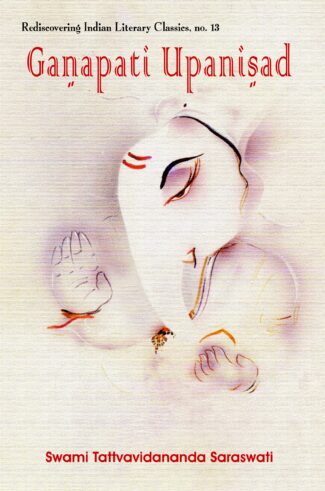
The book presents the text of the Ganapati Upanisad dealing with the worship of äsvara and revealing the nature of the ultimate Reality along with its transliteration in Roman script, followed by a detailed commentary a critical analysis on its meaning.
The Upanishads represent a glorious religious-philosophical thinking that is at the core of the Indian tradition. An important Upanishad is the Ganapati Upanishad, found in the concluding part of the Atharvaveda, which deals with the worship of ä÷vara and reveals the nature of the ultimate Reality in which everything resolves. The book presents the text of the Ganapati Upanishad along with its transliteration in Roman script which is followed by a detailed commentary on its meaning that takes up each line for critical analysis. Beginning with a general discussion on the Upanishads, their association with specific Vedas and their main purpose, Swami Tattvavidananda examines the nature of the Cosmic Power and the universe, propitiation of God, the purpose of living, concepts of ananta, ananda and others as explained in the Ganapati Upanishad. He explains the derivative roots of many words so that the concepts may be better understood by the readers. The commentary, in a language that demystifies esoteric concepts, includes many cross-references. The book will be extremely useful to scholars of Vedantic thought and Indian religious and philosophical traditions as well as general readers.
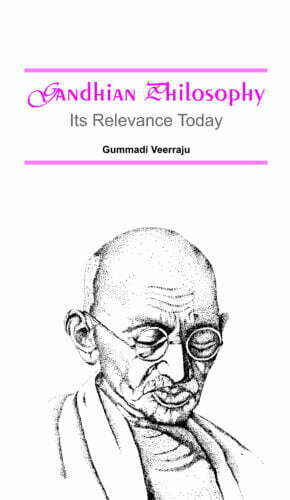
Retrieving a range of Gandhis social, economic, moral, spiritual, cultural and political ideas from various sources, this work gauges the relevance of Gandhi and Gandhism in the dehumanized, fragmented world of moral decay and unbridled consumerism.
Gandhi (1869-1948) held no political office. Yet he could arouse the conscience of an entire subcontinent! A lean, frail, half-naked fakir armed with a wooden staff and simple dignity of a human being, he fought against the greatest empire, the world has known. It was just the moral grandeur of his soul which enabled him to fight against brute power, in any form, even vanquish it. Generations to come will scarce believe that such a one as this in flesh and blood walked upon this earth, said Professor Einstein of him. A saint, social activist and political philosopher, unlike any other known in the twentieth century, Mohandas Karamchand Gandhi held out a message which, based on a series of his experiments with truth, touched upon every domain of human life: social, economic, moral/spiritual, cultural, political. Retrieving a range of these ideas from a variety of sources, this book tries afresh to gauge how far Gandhi and Gandhism are relevant in this dehumanized, fragmented world, perched dangerously on stockpiles of all-devastating arsenal; or in this age of distrust, moral decay and unbridled consumerism; or yet again when seen against todays aggressive/retaliatory attitudes, or against the growing cult of violence. The book is not just a revalidation of Gandhian philosophy, but a reminder as well, suggesting how in his abiding solutions alone: with their eloquent underpinnings of truth, non-violence and service of humanity, lies the hope for mankind in this conflict-ridden world.
| There are no products |